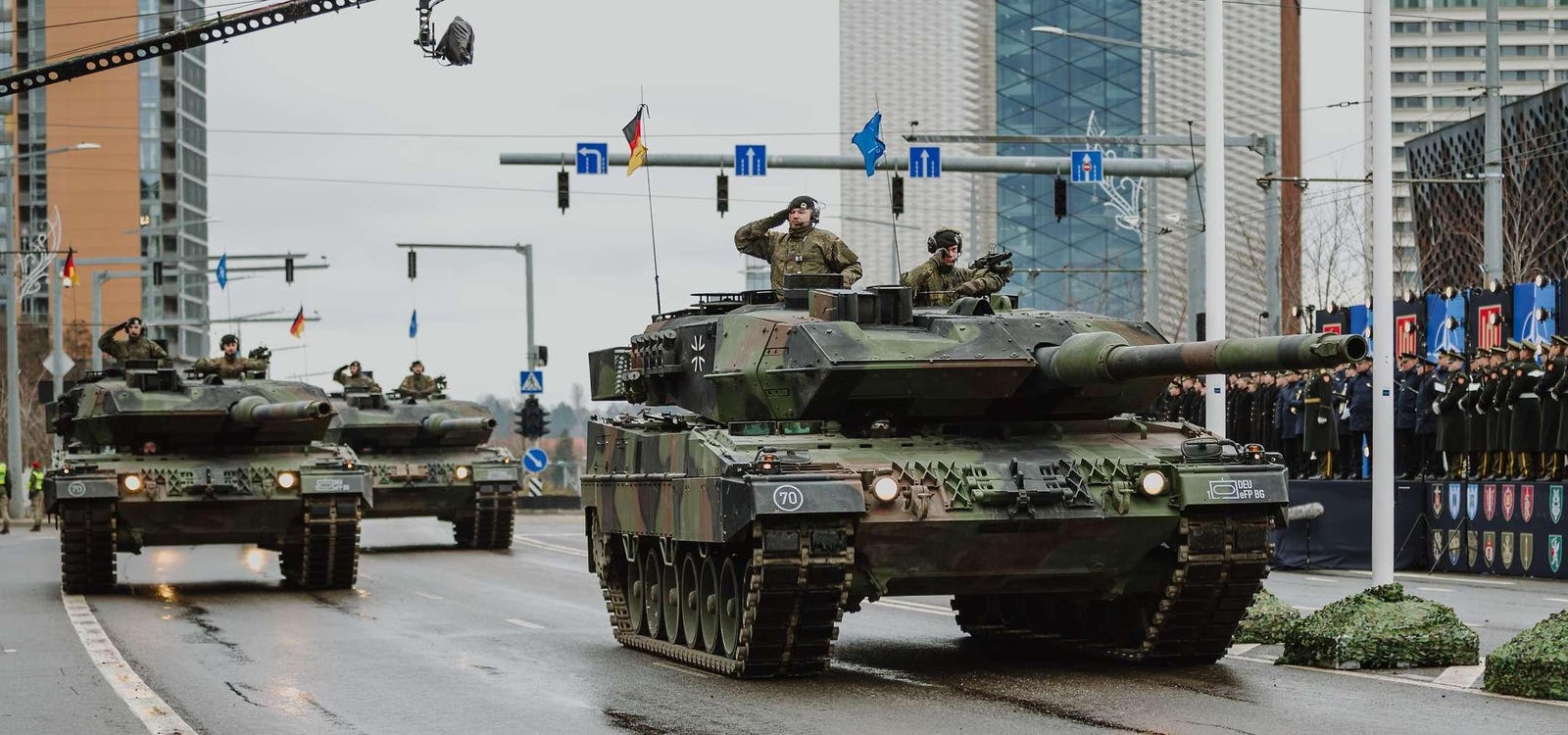German tanks in Lithuania.
German government photo.
Germany is on track for a sharp increase in military spending that could equip a bigger Bundeswehr—the German military—with more armored vehicles, more air defense batteries, more warships, more spy satellites and critical technologies such as radar and radio jammers and artificial intelligence.
The impetus behind the spending boost—hundreds of billions of dollars in two separate packages—is obvious. As the United States under President Donald Trump aligns more closely with Russian interests and leans on Ukraine to effectively surrender to Russian aggression, Europe must achieve “strategic independence” from its one-time close ally across the Atlantic Ocean, German Chancellor-elect Friedrich Merz said.
Berlin currently spends around $68 billion a year on its armed forces.
Merz isn’t slated to assume his new office until later this month. But anticipating new political alliances in the German parliament, Merz pushed for the bigger portion of the defense boost, part of a $550-billion fund that would also pay for environmental projects, to come up for a vote before late March.
Lawmakers voted on Tuesday. The massive spending package passed.
The new funds are supplementary. That is, they will add to a separate $110-billion fund championed by outgoing chancellor Olaf Scholz. The earlier plus-up pays for Germany to meet its pledge to spend 2% of its gross domestic product on defense by 2027. The current increase is likely to fund a dozen initiatives the government identified in a 2024 study.
They include:
Secure communications
A.I.
Shipbuilding
Armored vehicles
Sensors
Electronic warfare
Missiles and missile defense
Satellites
Ammunition
Drones
A German navy photo.
German government photo
U.S. turns away from Europe
It’s not hard to detect, in the text of last year’s study, German leaders’ determination to replace the critical military capabilities European countries once counted on the U.S. to provide—either bilaterally or under the auspices of NATO.
U.S. industry builds sophisticated long-range air defenses including Patriot missile batteries; European industry struggles to assemble more than a handful of similar SAMP/T batteries every year. The U.S. Navy operates more than 100 Boeing EA-18G radar-jamming planes; European air arms possess only a few planes kitted out for the suppression of enemy air defenses.
The U.S. Space Force maintains hundreds of satellites for surveillance, communication and navigation; the European space forces deploy just a few dozen similar spacecraft. The U.S. Air Force is moving quickly to equip armed drones with A.I. that’s capable of winning a dogfight with a human pilot; European air forces lag behind.
German forces require a host of advanced technologies, but many of their most urgent requirements are as low-tech as possible: in particular, people and ammo. Berlin wants to add 20,000 people to its current military payroll of 180,000. The extra billets will help the German army stand up a mechanized brigade it plans to permanently station in Lithuania as a deterrent against further Russian aggression.
If Russia defeats Ukraine—possibly as a consequence of the U.S. fully abandoning Ukraine or even actively siding with Russia—this brigade and other European forces might be the only thing standing between a battle-hardened Russian army and the free countries of Europe.
More than anything, the brigades will need ammo. Lots of it.
